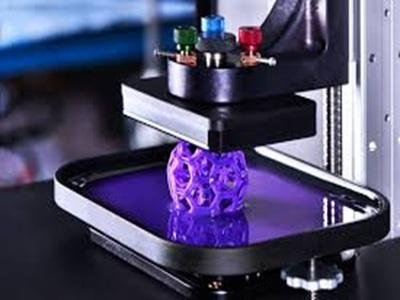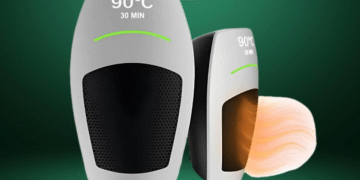
3D Printing Market Size to Reach USD 125.9 Billion by 2033, Driven by Advancements in AI-powered 3D Printing Technologies
The global 3D printing market size was valued at USD 28.5 Billion in 2024. Looking forward, IMARC Group estimates the market to reach USD 125.9 Billion by 2033, exhibiting a CAGR of 17.9% during 2025-2033. The market is primarily influenced by the continual advancements in AI-powered 3D printing technologies, increasing reliance on personalized solutions in numerous end-use industries, rising adoption of sustainable manufacturing methods, and strategic government initiatives facilitating additive manufacturing.
The 3D printing industry is forced to expand in 2025, with a flurry of sectors from manufacturing to healthcare, taking in new additive technologies. From an exclusive prototyping technology, 3-D printing found itself much more thrust into the limelight to produce end-use parts, customized products, and intricate designs that are either difficult or expensive to produce conventionally. The market covers everything from desktop printers and industrial systems to specialty materials and software platforms that support integrated workflows.
Industrial adoption remained one of the biggest trends through 2025. The aerospace, automotive, and heavy industries began using 3D printing for lightweight structural components, custom tooling, and on-demand replacement parts, thus contributing to reduced inventory costs, enabling rapid design iterations, and shrinking production cycles. Large-scale metal printing and high-performance polymers are the technologies that make printed components strong and durable enough to be truly functional in aggressive environments.
Bioprinting and healthcare are further stimulating market growth. Bioprinting is the faster and lower-cost method of fabricating dental devices, implants, and prosthetics, which are customized for specific patients. In newer instances, researchers are printing organ-like geometries and tissue models for drug testing and regenerative medicine. These lead to improved patient outcomes and decreased development time.
Customization and on-demand production are therefore still the most important market forces. Designers and their consumers are able to choose from a wide range of custom product options-from a one-off pair of shoes or frames, 3D-printed to industrial parts-without investing in molds or production quantities. Integrated software tools are now enabling a level of design/simulation/print preparation flexibility that underlies this.
Get your Sample of 3D Printing Market Insights for Free: https://www.imarcgroup.com/3d-printing-market/requestsample
The trends for 2025 are material innovation and sustainability. The majority of users want recyclable polymers, plant-based resins, or metal powders with reduced waste. Mechanical properties, color, and biodegradability have been improved through material chemistry development. With industries focusing on reducing waste and eco design, buyers who care more about environmental footprint are drawn to these sustainable products.
Cloud-based platforms and digital manufacturing networks are also transforming how 3D printing is obtained. Production can be outsourced to decentralized printing networks, allowing for local delivery and lower shipping costs. Quality assurance, certification, and traceability are also possible through these digital platforms, which is critical for regulated markets such as healthcare and aerospace.
Lastly, ease of use and affordability are driving adoption to small businesses and schools. Entry-level machines, packaged supplies, and user-friendly interfaces are making 3D printing more accessible for startups, schools, and hobbyists, broadening the innovation ecosystem.
Overall, the 3D printing ecosystem in 2025 is defined by industrial utility, medical use, personalization, sustainability, and digital interconnectivity. With advancing technology and cost-effectiveness, 3D printing continues to transform production models and create innovative possibilities for a range of industries.
Ask Our Expert & Browse Full Report with TOC & List of Figures: https://www.imarcgroup.com/request?type=report&id=1325&flag=E
3D Printing Market Segmentation:
Analysis by Technology:
Stereolithography
Fused Deposition Modeling
Selective Laser Sintering
Electron Beam Melting
Digital Light Processing
Others
Analysis by Process:
Binder Jetting
Directed Energy Deposition
Material Extrusion
Material Jetting
Powder Bed Fusion
Sheet Lamination
Vat Photopolymerization
Analysis by Material:
Photopolymers
Plastics
Metals and Ceramics
Others
Analysis by Offering:
Printer
Material
Software
Service
Analysis by Application:
Prototyping
Tooling
Functional Part Manufacturing
Analysis by End User:
Consumer Products
Machinery
Healthcare
Aerospace
Automobile
Others
Regional Analysis:
North America
Europe
Asia Pacific
Middle East and Africa
Latin America
Who are the key players operating in the industry?
The report covers the major market players, including:
3D Systems Inc.
Beijing Tiertime Technology Corporation Limited
EOS GmbH
The ExOne Company (Desktop Metal Inc.)
General Electric Company
Hewlett Packard Enterprise Company
Materialise NV
Optomec Inc.
Proto Labs Inc.
Renishaw Plc
SLM Solutions Group AG
Stratasys Limited
Ultimaker B.V.
Voxeljet AG
XYZprinting Inc.
Contact US:
IMARC Group
134 N 4th St. Brooklyn, NY 11249, USA
Email: sales@imarcgroup.com
Tel No:(D) +91 120 433 0800
United States: +1-201971-6302
About Us:
IMARC Group is a global management consulting firm that helps the world’s most ambitious changemakers to create a lasting impact. The company provides a comprehensive suite of market entry and expansion services.
IMARC offerings include thorough market assessment, feasibility studies, company incorporation assistance, factory setup support, regulatory approvals and licensing navigation, branding, marketing and sales strategies, competitive landscape and benchmarking analyses, pricing and cost research, and procurement research.
This release was published on openPR.
















